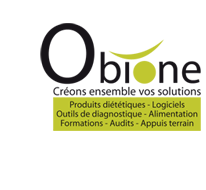Always in your pocket, COW notes will rapidly become your expertise partner. Whether you’re a breeder, vet or technician, it will assist you with the livestock in order to supplement and strengthen your expertise, allowing you to quickly evaluate the data that you record.
Practical, Useful and Indispensable! Discover COW notes!
1. Easily find COW notes on your tablet
2. Select the assessments that you wish to conduct and the order in which you are going to conduct them.
“Let’s start by selecting the assessments…..
……and the order in which we are going to conduct them”
3. Select your operating method
« we can decide to conduct the assessments one cow after another …

you conduct the first assessment on all of the animals, you then move on to your second assessment on all of the animals, then you launch your third assessment, etc.
4. Easily identify the animals
In Cow Notes we can easily identify the animals using several different approaches:
• With their Work number + Parity + Stage

- With Parity + Stage
This is the fastest method and the one offering the greatest interest as it enables you to focus on the comparative study of changes inprimiparous and multiparous cows throughout their production stage.
This operating method allows you to create a summary of the day’s data once data entry is complete.
After you have entered several sets of data it also enables you to create a summary both in calendar-form, to identify risk periods, and also according to the physiological state so as to identify the livestock risk phases during the course of the preceding months
- Without identification
This method is preferable for occasional usage or when you wish to assess the herd as a whole without differentiating Parity and physiological stage.
This method allows you to create and archive an average score per criterion assessed.
5. Perform your assessments quickly and easily
Example 1 : The Body Condition Score
Example of the Holstein breed
At any time you may activate the help facility for each of the assessments. This help offers you information on the anatomic elements that need to be observed. A glossary sets out the anatomic terms for you. The Body Condition Score is a fundamental element of the herd. Having animals in optimal State at each Stage is a key performance factor. COW-notes now enables you a quick, reliable assessment. Let us take the example of the assessment of a cow with a BCS of 2.75.
First click: the hip: U-shaped or V-shaped?
“let us take an example in which the cow presents a V-shaped hip angle…
Second click: is the ilium (point of hip) angled or not?
…“… our cow has an angled ilium…” »
The following choice concerns the assessment of the ischium (point of buttock)
« “…and a covered ischium”, » by clicking on the corresponding image we are able to record the rating of 2.75, and we then simply move on to the next assessment.
Example 2 : The Rumen Fill Score (RFS)
The RFS is an important element in controlling ingestion of the ration.
Silent heat, insufficient production, excessive weight loss in the animals, cases of ketosis and numerous other metabolic disorders may originate in insufficient ingestion. Where this insufficient ingestion is revealed, it can have different origins that will need to be monitored, including, amongst the most important:
- Not enough to eat
- Competition between animals: not enough space at the table
- Unpalatable ration
This assessment is to be differentiated from body condition: a fat cow is not to be confused with full rumen! A lean cow may very well have a full rumen, and the opposite is also possible.
Try your hand thanks to the Help screen, accessible via the assessment screen.
RFS: one click is all it takes
6. Summary screens
From the day’s data entered….
Once you have entered the day’s data, COW-notes enables you to display a summary of the assessments conducted.

…to the data-entry history
COW-notes enables you to evaluate all of the data entered during the last 12 visits. In order to provide you with a maximum amount of information, no fewer than 75 graphs and tables are automatically generated by COW-notes. This will make it very easy for you to find the information that is important to monitor your herd or complete the visit or monitoring sheets.
As such it is easy to identify the times of the year when the animals are the cleanest, or those when they are lamest.
Lastly, a .csv file allows you to export the data into an Excel sheet in order to group together the data of several users, that of your veterinary clinic or your business, for example, in order to conduct a global study of the data that everyone has recorded.
This makes COW-notes a very useful tool for all:
- The farmer becomes an expert in their herd by precisely assessing their animals
- Farmers’ partners complement their expertise by evaluating and interpreting all of the data saved as precisely as possible.












